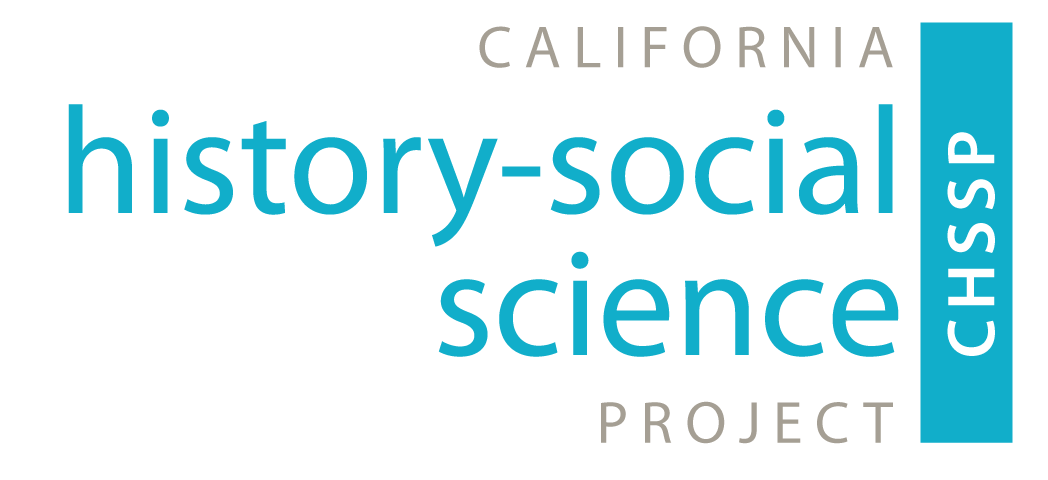
Researched and annotated by Wendy Rouse, PhD in collaboration with the California History-Social Science Project, this collection of primary sources are designed for use in the K-12 classroom. Each set includes context, focus questions, further readings, and a plethora of primary sources to help teachers infuse their curriculum with LGBTQ voices.
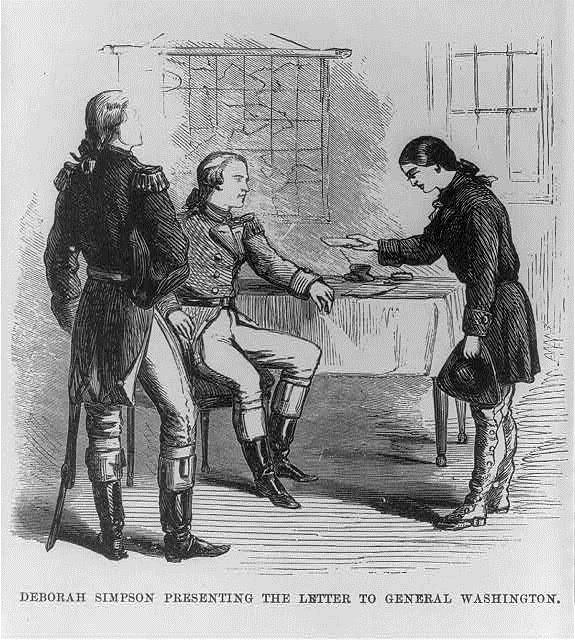
American Revolution
Sources in this set allow teachers to take a more critical look at the American Revolution through the lens of those who challenged gender and sexual norms using the language of liberty and equality.
Image Citation: Deborah Simpson i.e., Sampson presenting the letter to GeneralWashington. , . [No Date Recorded on Caption Card] Photograph.https://www.loc.gov/item/2002698474/
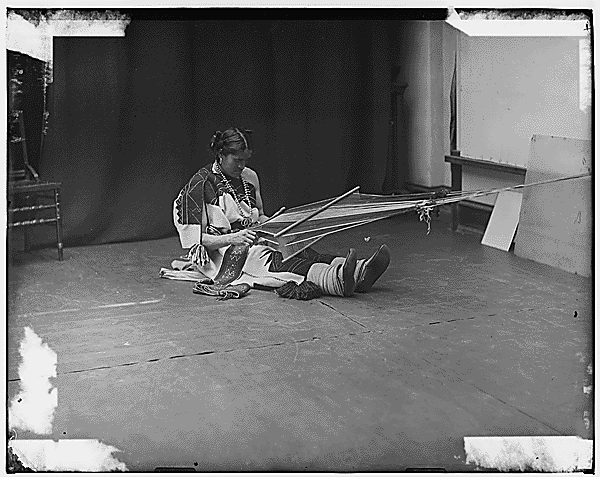
The California Gold Rush & The Western Frontier
As reframed western expansion unit to include discussions of settler colonialism and gender expression allows teachers to address the complex nature of the west. While it allowed for freedom of expression for white settlers, it led to further cultural erasure for indigenous communities. Discussion of LGBTQ communities centers that complex history in a new way.
Image Citation: We’wha weaving on a loom, circa 1871-1907, John K. Hillers, photographer, Record Group 106: Records of the Smithsonian Institution, 1871-1952, Series: Photographic Negatives of Native American Delegations and Archeology of the Southwestern United States, National Archives and Records Administration https://catalog.archives.gov/id/523797

Women's Suffrage
This source set offers teachers moments to discuss the role of queer women as leaders of the suffrage movement. In addition, it allows for dialogue about societal gender norms and how individuals challenged the prescribed notions of a binary world.
Image Citation: “Postcard: I Want to Vote, But My Wife Won't Let Me. [1909],” Ann Lewis Women's SuffrageCollection, https://lewissuffragecollection.omeka.net/items/show/1929

Slavery & Reconstruction
Enslaved people developed unique strategies of coping with the brutal and dehumanizing conditions of slavery. Enslavers denied them rights to legally marry, forcibly separated families, erased key markers of gender afforded free people, and policed their expressions of family both during enslavement and Reconstruction. These sources help teachers begin discussions on the incredible impact people and policies had on Black communities.
Image Citation: “Maria Weems escaping in male attire,” 1872, Schomburg Center for Research in Black Culture, Manuscripts, Archives and Rare Books Division. The New York Public Library, Digital Public Library of America, https://digitalcollections.nypl.org/items/510d47db-bcce-a3d9-e040-e00a18064a99

Industrialization & Urbanization
In the late nineteenth and early 20th centuries, industrialization and urbanization brought massive changes to American life. Coupled with the development of subcultures where queer communities developed were the vice crusaders who attempted to uphold white, middle class, patriarchal, sexual and gender conventions. This source set offers teachers resources for explaining this dichotomy.
Image Citation: “Carried the New Woman Fad Too Far,” San Francisco Chronicle. July 7, 1896, 20.
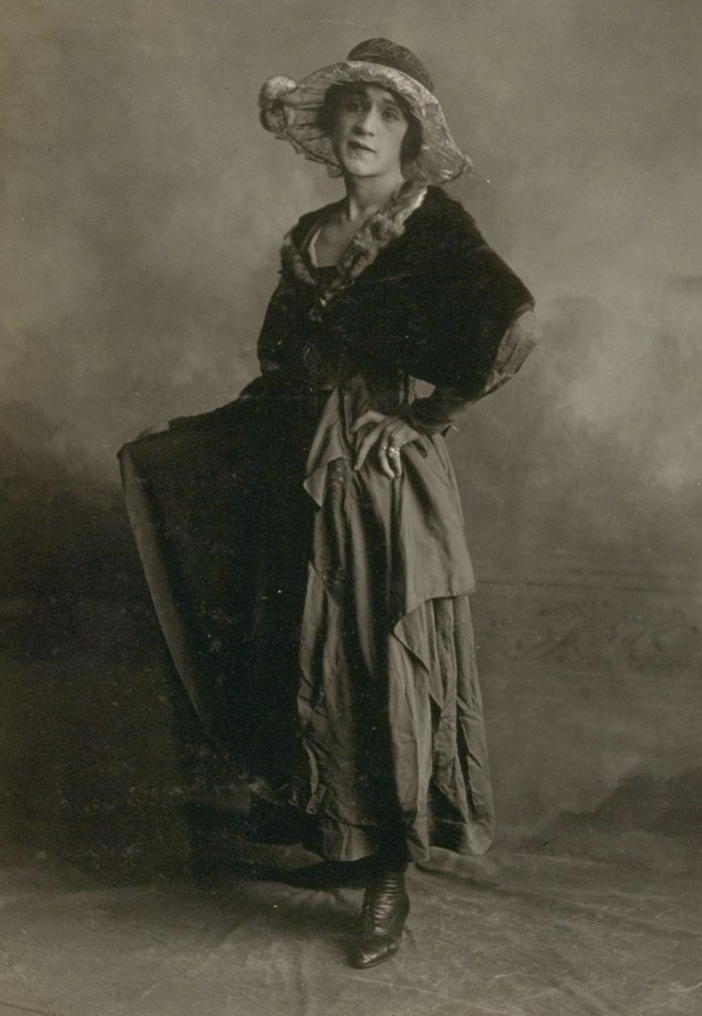
Early 20th Century Immigration
The US government in the early 20th century used a variety of methods to exclude immigration of individuals based on nativity, race, class, sexual orientation, and disability. Immigration officials justified denying entry to those they suspected of being part of the LGBTQ community in particular through a 1907 law that denied entry to those convicted of or admitted to being involved in "moral turpitude." Homosexuality was considered part of that category. This source set offers teachers examples of how the US government policed gender and sexuality at the nation's borders.
Image Citation: Jesse Brown Cook Scrapbooks Documenting San Francisco History and Law Enforcement. UC Berkeley, Bancroft Library. https://oac.cdlib.org/ark:/13030/tf3n39p0jm/?layout=metadata&brand=oac4

The Roaring 20s
The 1920s is frequently referred to as the “Roaring 20s” or the “Jazz Age.” The era, which extended into the 1930s, is famous for its musical and artistic renaissance as well as the decadence of Prohibition-Era speakeasies, the expressive freedom of flappers, and the rise in youth culture. The 1920s was also a period characterized by an explosion of queer culture. The “Panzy Craze” or the “Fairy Craze” reflected the popularity of LGBTQ+ performers in major cities like New York, Chicago, and Los Angeles. This source set offers ways to expand classroom discussions of changing gender norms throughout the early part of the 20th century.
Image Citation: Jean Malin as Kay Best" in "Arizona to Broadway" Fox Film, 1933 https://www.onearchives.org/wp-content/uploads/2020/02/one-archives-foundation-hollywood-1920s-1930s.pdf

Hollywood & The Hays Code
The 1929, the Motion Picture Production Code, popularly known as the Hays Code authorized censors to regulate the content of motion pictures from 1930-1968. The code set the precedent for banning references to homosexuality or any positive portrayals of LGBTQ+ people in films. This source set examines the short and long-term impact of the Hays Code in Hollywood and on the viewers of film and television.
Image Citation: Marlene Dietrich in Morocco (1930), Josef von Sternberg, director, Paramount Pictures,
https://commons.wikimedia.org/wiki/File:Morocco_(film)_1930_Josef_von_Sternberg,_
director._Marlene_Dietrich,_cross_dress,_top_hat.jpg
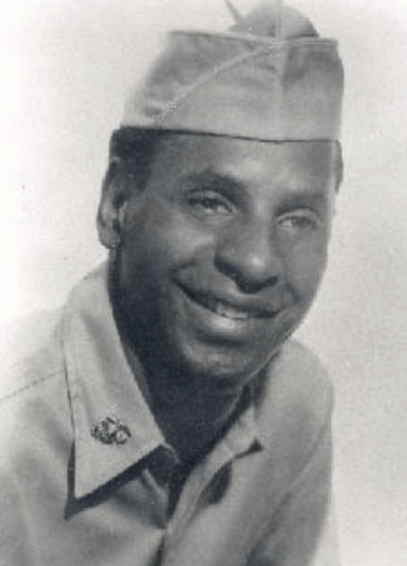
World War II
With the outbreak of WWII, the government called for all Americans to serve their country. Many LGBTQ+ people took the risk to serve in the military where if they were discovered, they could be discharged from the military, imprisoned, or sent to a psychiatric ward. Queer service member developed creative and subversive ways to live their lives, form relationships, and create community.
Image Citation: "Esther Herbert and Marvyl Doyle at San Bernadino Army Air base," Marvyl Doyle Collections, One National Gay and Lesbian Archives at the University of Southern California Libraries.

The Lavender Scare
Following World War II, open and suspected LGBTQ soldiers and government employees were dismissed from service under Eisenhower's Executive Order 10450 in what has been termed the Lavender Scare. This source set highlights the government's efforts to exclude, as well as individual efforts to resist.
Image Citation: Image from Franklin Kameny Interview, Franklin E. Kameny Collection (AFC/2001/001/05208), Veterans History Project, American Folklife Center, Library of Congress https://memory.loc.gov/diglib/vhp-stories/loc.natlib.afc2001001.05208/

Gay Liberation
Building on early efforts from the Mattachine Society and the Daughters of Bilitis, a more radical group of LGBTQ+ activists began advocating for a broader "gay liberation" in the 1960s. They relied on more confrontational tactics in the style of the civil right, anti-war, and counterculture movements in an effort to have a more visible "coming out" of LGBTQ+ people. This set highlights a few of the events in California from the 1950s-1970s that exemplified their efforts.
Image Citation: "The Farm is Liberated with Kight and Kilhefner 1970," Coll2012-031 Gay Liberation Front (GLF) Los Angeles records, One National Gay and Lesbian Archives, University of Southern California
All resources here are for educational use and are free of charge. We have secured copyright permission where necessary, to the best of our abilities, and have indicated that information. Please, dear user, do not publish these materials or distribute beyond its original intent. Users are responsible for all issues of copyright. If you are the rightful copyright holder and our online use constitutes an infringement of your copyright, please contact us by email at chssp@ucdavis.edu to discuss its removal.
